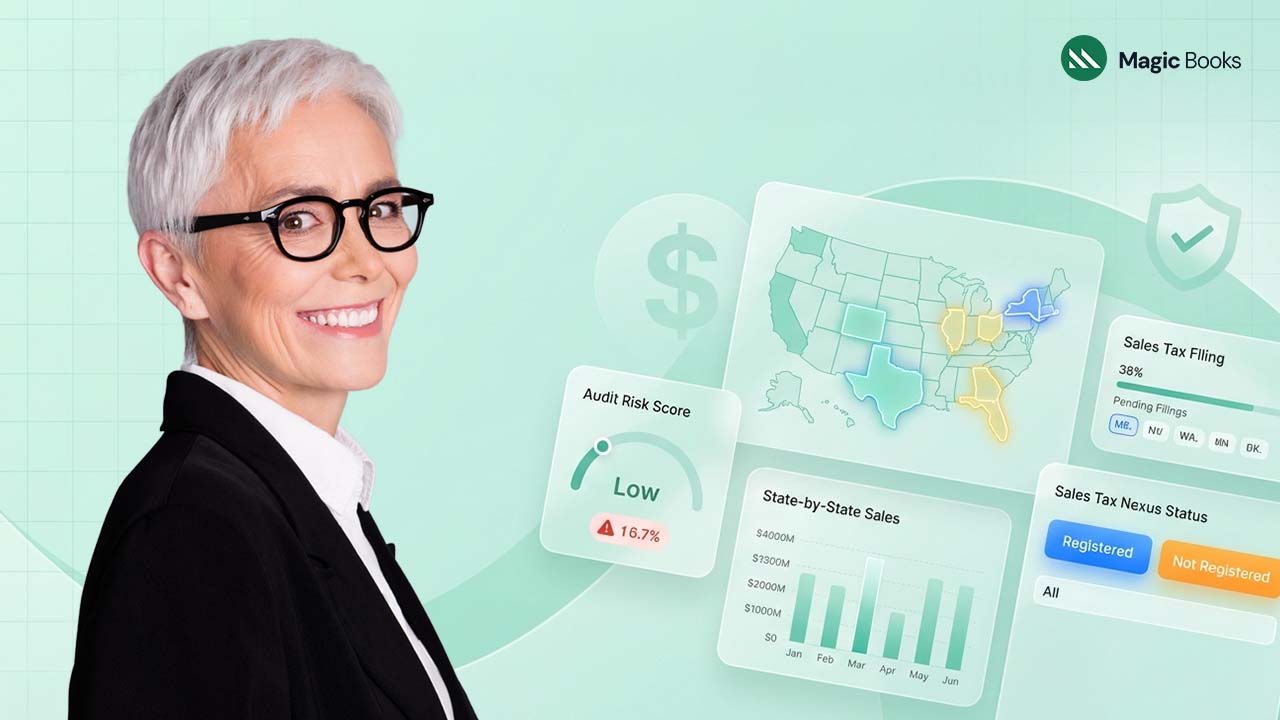It is the beginning of the holiday season and a time to close your financial books for the year. It is something every business has to do each year except in those cases when your fiscal year ends on December 31. Closing your books is simply a method by which all the details concerning your business are correct and accounted for properly. This review should be done monthly, but the final review and changes at the year-end are ordered. This is the last opportunity to get corrections done before closing the year-end financial statements and corporate taxes.
WHAT IS YEAR-END ACCOUNTING?
Before talking about year-end financial accounting, it is imperative that we explain what year-end means and why it is so important for your company.
Year-end accounting is a series of operations that are performed to ascertain that the financial transactions are correct and up-to-date. Year-end accounting balances and closes your books for 12 months. What this means is that you can go ahead and create accurate financials as well as annual reports for your business. You can also pick out and correct errors in your books with year-end accounting.
You can prepare for tax season by ensuring that the books are balanced and closed at year-end. With your books closed, you can start the subsequent year clean with your books and records in order.
Why close the books?
Closing your books regularly will prevent unwanted changes to your accounting data after you create important financial reports for your accountant or tax professional. In accounting, expenses should be recorded at the right time, and closing books ensure no entries are wrongly recorded in the wrong periods so that the statements show the true income and expenses of each period.
There is a difference between month-end closing and year-end closing.
Monthly and yearly closing are two important accounting tasks that differ in what they cover and how often they happen. A month-end close is done to finish the accounts for the month and to ensure reports are correct and on time. The year-end closing process is about completing a company’s financial statements for the whole year.
A company’s overall financial health is comprehensible from its year-end closing. Such a perspective would indicate short- and long-term objectives. However, a month’s end closing process also brings into focus the progress made so far in the fiscal.
How to Close the Books?
Closing the books is very easy: gather the right financial data within a set time, put the right journal entries and financial information into the general ledger, add up all the ledger accounts, prepare a trial balance before making your final report, and if the numbers don’t match, revise your work and make adjusting entries until you can create the final financial statement.
Year-End Document Checklist:
Collect all your key bookkeeping papers and forms to submit your taxes before checking off the items on the list. Check off the documents you will need by reviewing this list for the end of the fiscal year.
- Bank and credit card details
- Sentences
- Invoice lists and POS monthly reports Past tax returns Balance sheet/P&L statement
- Outstanding invoice and bill, Credit, Outstanding uncleared funds
- Depreciation schedule or list of fixed assets for all business assets
What was the cut-off time on accounts?
Some people tend to confuse “year-end” since it is not exclusively the calendar year that falls between January 1 and December 31. For this reason, a business usually selects a 12-month period that fits them best.
A fiscal year-end is any period that lasts for 12 months in a row.
Many businesses prefer that their fiscal year coincide with the calendar year, for example, January 1 to December 31. Some companies, however, may decide to do it consecutively for 12 months but not necessarily that of the calendar year. There are some retailers that need help managing the holiday rush seasons and their finances.
Some businesses have a different schedule, like a fiscal year that runs from February 1 to January 31.
Choose one that best fits your business needs. Some businesses can work with a traditional calendar year. Others prefer a time that better falls in line with their business; maybe the end of a busy sales cycle.
HOW TO CLOSE THE BOOKS IN SIMPLE STEPS:
Are you ready to learn how to close the accounting at the end of each year? The 17 steps to closing the books are as follows. These are year-end accounting procedures that will help prepare you for creating year-end financial statements. They also get you set up for the new year with balanced books.
STEP 1: Create Invoices: Account for all your incoming and outgoing money by recording correctly before closing the financial year of your business. Therefore, invoice all the uncharged orders and projects immediately.
Step 2: Invoice Reminders: You should send chasers to customers who have not yet settled their accounts. Most accounting packages can automatically email reminder notices about bill payments. Make use of this feature to collect your money quickly.
The truth of the matter is, of course, that the process you must or feel that you could cancel unpaid bills given individuals who haven’t or refused to pay, discuss such a matter with your accountant, and find out whether such an act of magnanimity will serve to be a suitable balm for your small business.
STEP 3: Track your expenses: This is the best time now to begin writing down all your expenses and listing everything. Right before doing that, ensure that all the expenses have been inputted into the accounting software. It will become easier for the accountant to locate the tax-deductible expenses that your company can use.
You can make this easier to understand by recording your expenditures over the year.
STEP 4: Separate personal and Business expenses: The cost of small businesses needs to be kept in a different account. However, most freelancers and smaller companies never do. That means you will have to keep track of personal costs as well as business costs.
The IRS can start auditing if they feel that small business deductions constitute personal expenses. So, keep personal and business expenditures separate.
Step 5: Update the mileage log: Tax season is around the corner. Update that mileage log to maximize small business tax deductions.
Some software applications, such as QuickBooks and XERO, even track your mileage using an app they provide. One alternative is a paper log in which you actually record the mileage, date, and even purpose of travel.
STEP 6: Pay Bills From Sellers: You have to collect bills from all your clients and then ensure you repay any debt your small enterprise has to the suppliers.
STEP 7: Pay Contractors: Ensure all the contractors are paid before closing your accounts.
We have a list of the best payroll software that can make payrolls even simpler for small businesses in paying their employees and contractors.
Step 8: Check your Bank Accounts: Then you make your list of income and expenses, and go through all of your bank and credit card accounts to ensure that the income and expense items should indeed match what is reflected in the bank statements.
Checking all your accounts every month can help make things easier and save time.
Need assistance in balancing your annual and monthly accounts? Ask your accountant or your accounting program’s help center.
STEP 9: Loaded assets replacements: Ensure that all fixed assets are up-to-date before closing of accounts. Include any other fixed assets you might have overlooked.
Fixed assets are long-life assets whose useful life is higher than one fiscal year.
This is a fixed asset and not an expense if your company buys new computers. Though you have paid money for the computer, it’s a fixed asset, as it lasts longer than one year.
STEP 10: Do Depreciation: You will now have to devalue the value of all your fixed assets for the current year. Fixed assets have lives of more than one year.
Depreciation is the IRS’s method of measuring the amount of time passed over an asset during one calendar year. This also gives a basis to reduce your taxable income by that percentage used. You can ask your accounting firm such questions. You can prepare yourself for depreciation either on accounting software like Xero or QuickBooks or let accountants take care of it.
Step 11: Decide on Incentives for Employees: Determine whether your company is going to provide bonuses to its employees before the end of your fiscal year. If bonuses are provided, then make sure to have the right withholding tax.
Step 12: Reverify Payroll Taxes: Ensure that the payroll tax liabilities match your quarterly payroll reports. Report discrepancies to your accountant before closing the books.
Step 13: Employee Information Check: Review all information on current and previous employees and contractors for the calendar year. First, proofread everything to ensure correctness. Then, send out an email to your team just to confirm that nothing has changed. Contact information for employees must be correct to send the W-2s and 1099s during tax season.
STEP 14: Count your stock: Count your inventory one last time. Does this count on the day your books close, often December 31? Because these numbers are used on several tax forms, small businesses should record inventory at the start and end of each year.
STEP 15: Publish the reports: Your accounting software will automatically make a Profit and Loss report (also called an Income Statement) and a Balance Sheet report. All these are supposed to be correct. You could also prep your Statement of Cashflows and get a head start by preparing the important reports that your accountant will need for taxes.
STEP 16: Open the company file: This is a very important step. After completing steps 1-15, you will prepare your company file with the year’s data. It is not a good idea to lose important accounting data. Your accountant will need to access the company file to file tax returns and make year-end changes. If the software doesn’t have any company file feature, then it is possible to export all necessary data into separate files and save it safely.
STEP 17: Close all the books: Once you finish each step and check off everything on the Year-End Checklist, you can close your books. Accounting software makes that easy too. Users can not create or modify transactions before the lock date or close their books. For most businesses, password protection is enabled to limit access to transactions before the close date. This will allow your accountant to review everything and make any changes needed.
Closing out the year can be a huge job. This is especially true if you feel you lack the time or support to do so. This financial year-end checklist is for small business owners, but you don’t have to do it alone.
You can always seek assistance with bookkeeping. A bookkeeping professional by Magicbooks can help with the bookkeeping of finances so you can get back into your loved business.
See how we can help you with your bookkeeping needs and answer your bookkeeping questions.



